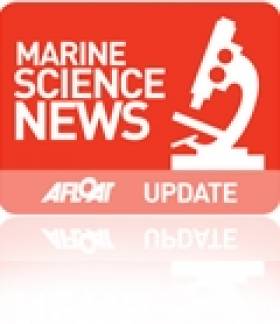Displaying items by tag: Wavebob
Wavebob Awarded 'Smartbay Innovator of the Year' Award
#marinescience – Wavebob was recognised as one of Ireland's leading engineering and research companies today when they were awarded the SmartBay Innovator of the Year Award. Wavebob was recognised for innovation, engineering and leadership in the emerging wave energy market.
Four additional companies were also recognised for their contribution to innovation and research by leading International Companies. IBM presented an award to SonarSim Ltd; Intel presented an award to Episensor; Veolia presented to Techworks Marine Ltd.; and Microsoft presented an award to IDS Monitoring Ltd., all members of the SmartOcean innovation cluster.
Andrew Parish, CEO of Wavebob said, 'We are delighted to receive this award – it is great recognition from a cluster of companies all working together in the pursuit of commercial opportunities in the marine sector. We have benefited from being part of the SmartOcean innovation cluster through access to world class skill-sets and technology which co-exist in the SME and multinational companies in the cluster. This approach is directly in line with Wavebob's strategy of working with strategic partners."
The awards were announced following the Inaugural SmartOcean Innovation Exchange, as part of the SmartOcean Conference. Sponsored by SmartBay Ireland Ltd, the event was hosted at the Ocean Wealth Pavilion of the Volvo-Global Business Village.
The Innovation Exchange event was designed to support companies to profile their new technologies that address market opportunities in the global marine sector. In total, 22 Companies were recognised by SmartBay Ireland and received the SmartBay Innovator Award. A number of International companies also participated reinforcing the links between the SmartOcean Cluster and related Clusters in Europe and Canada.
Speaking at the event Mike Devane, Chairman of SmartBay Ireland Ltd., said 'This event demonstrates, in the most practical way, how collaboration within a Cluster can help smaller companies gain access to technology and markets through the support of leading Multi Nationals'.
Dr Peter Heffernan, CEO Marine Institute said "We are delighted to be involved in this event supporting small and medium business to develop innovative solutions for the marine sectors. It's great to see 22 Irish and International companies showcasing their innovations and working with multinationals and the research community to examine how we can use technology to make the most of our marine resources."























